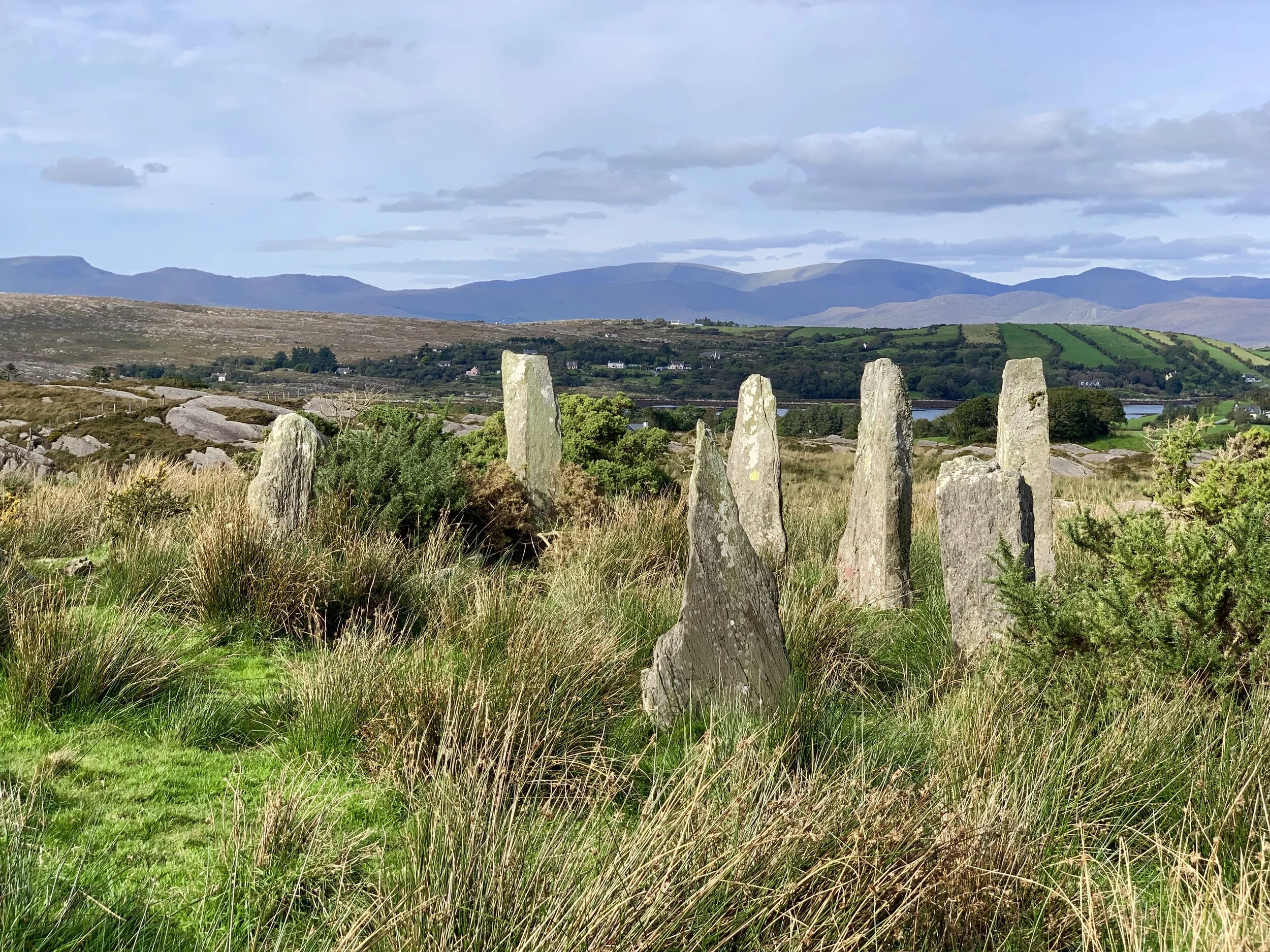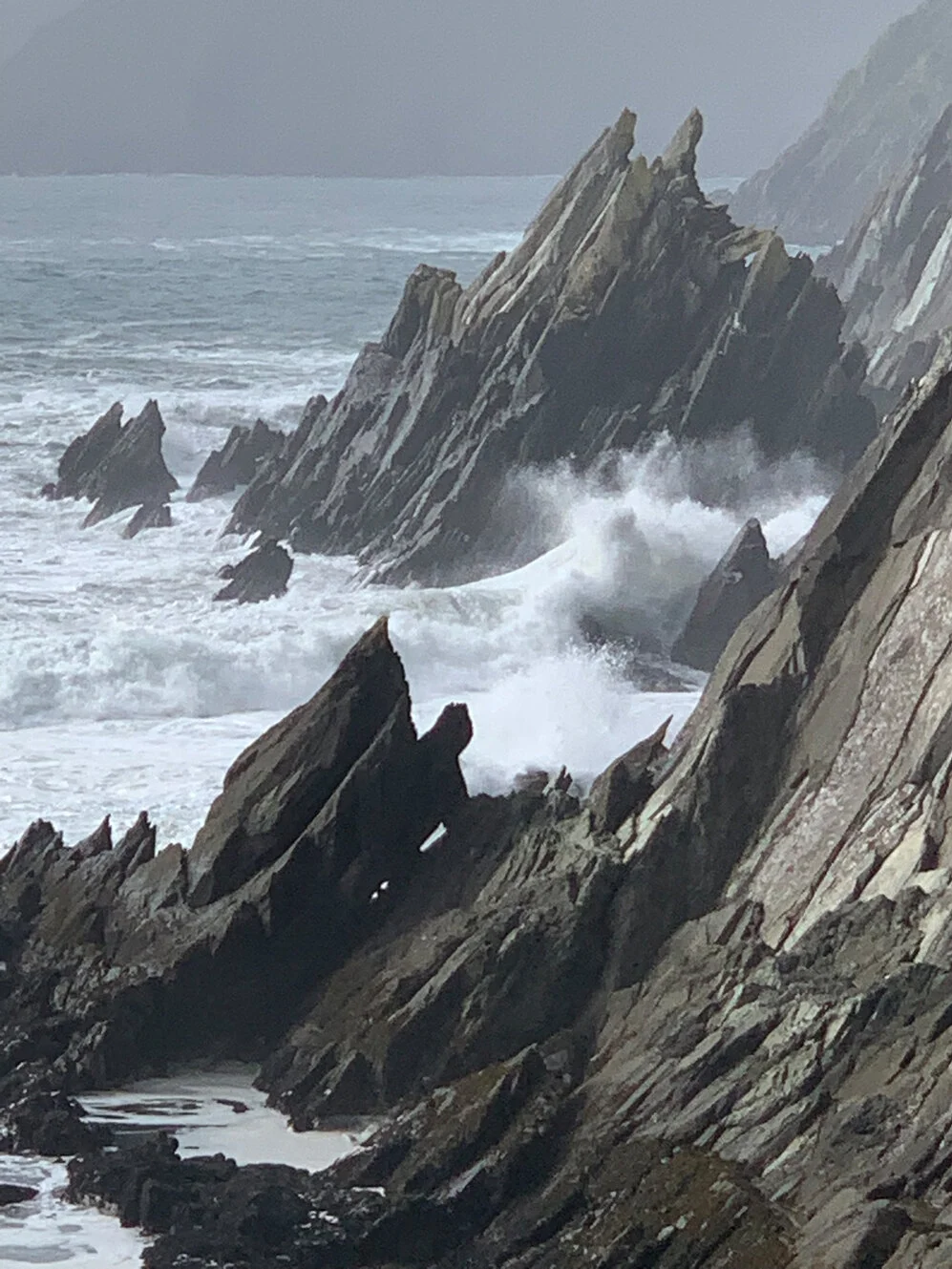On our recent trip around Ireland’s Wild Atlantic Way we were thrilled to have Kathleen Messmer along to photograph the mesmerizing beauty in this remote part of the world. As an avid photographer, Kathleen joined the trip with the intent to photograph as much of Ireland’s beauty as possible. Along the way she captured stunning shots like the ones you see below, learned quite a bit about traveling this stretch of Ireland’s coast as a photographer, and absolutely fell head over heels (literally, oops!) with the beauty found in this region. Read on for her best tips for photographers traveling around this part of Ireland.
8 Ireland Photography Tips
The Wild Atlantic Way is so much more than I ever expected in any dream that could have possibly been conjured. Incredible doesn’t even begin to describe it. It’s really that good that you’ll need all the Ireland photography tips you can get.
However, let it be known that protecting your gear is and should be THE most important part of your journey. That and protecting yourself, you know, in case you decide to take a dip in a rogue tide pool while wearing your photographic gear! There’s a story there, but that will be for another time.
Photographing cities, towns, countryside, and ways of life is foremost when traveling. How else will the rest of the world bear witness to such beautiful and sometimes eclectic regions of the world? With so much varied imagery to capture, be sure to create a thought-out plan and prepare for your travels in order to come back with the best content possible!
Tip #1: Be prepared for any type of adventure.
Ardgroom Stone Circle, Beara Peninsula. Bog not pictured.
In this rural part of the world, you may end up going places where most folks never go, which can be exciting and challenging all at the same time. Be open to adventure and you just may come across secret passage ways, entrances that no one else knows about, creepy, underground crypts, bogs where you sink up to your knees, all on a tip from an unexpected source… someone in a pub, a local guide, recommendation from your B&B host, or perhaps a mischievous leprechaun.
A compass and a headlamp can come in handy here since you may or may not have told anyone where you were going. Your phone’s offline gps and flashlight can be great tools to use, just be sure you won’t run out of battery! When exploring off-the-beaten-path in Ireland it can be dark, damp, and who knows what else? You might end up negotiating with a huge spider on the wall of a cave, asking them nicely not to bite you in exchange for not stomping them into the netherworld. Not that happened to me or anything…
As a photographer, be open to all of it and be prepared to use every single tool in your tool box!
At the edge of the Dingle Peninsula.
Tip #2: Explore with and without the group.
Even if you’re in a group or traveling with a buddy, it’s ok to take yourself off on a separate photographic adventure as long as you let someone know where you are and check your messages every now and then in case something comes up.
Be independent and do what you need or want to accomplish on your trip, even if others of your group are sleeping in or sitting in a pub enjoying a beer.
Often the best photographs are the result of a commitment to get the shot - even if it means waking up at sunrise or waiting for an hour til the shot is just right. On the flip-side… you should also be flexible with your photography desires, as noted in the next tip!
Tip #3: Take shots at different times of day
If you usually adhere to the rule of no photography between the hours of 10 a.m. and 2 p.m., make exceptions when traveling. Personally, I believe that rule needs to be revised since you may just miss some of the best shots on your trip if you get too hung up on the idea. Yes, get up early and shoot, yes, go out for golden or blue hour, but please, don’t stick your head (or camera) in the sand just because it’s between 10 a.m. and 2 p.m.
You’ll be kicking yourself all the way back on the plane for being narrow minded (oops, did I say that out loud?) and being afraid to break a rule or two that was put in your head by some rigid photography instructor twenty years ago. Things change, you can too. Be bold!
Make sure you have at least a wider angle lens - around 24-105mm and a telephoto lens with some length to it - say 70-300mm. It’s so great when you can get a few close-up shots without having to dangle from a cliff to get them! Filters can help with varying light conditions as well, like polarizing filters to reduce glare and improve saturation so be sure to read up on equipment options that will give you these kinds of versatility.
Dingle Peninsula.
Tip #4: Prepare for rain, every day
Make sure you bring a rain poncho and/or cover for your camera. Ireland is green and full of rainbows for a reason… it rains, frequently! If you’re fortunate enough to have a weather sealed camera, great. If not, make sure you protect it. Even so, a dip in the Atlantic Ocean with your camera probably isn’t advisable, unless of course you have a waterproof housing for it. Also be sure to have waterproof footwear - the ground is often saturated in Ireland, and… rather sinky. Which is why:
Tip #5: Travel insurance is a must
Being prepared is great, but sometimes even the best preparations don’t protect us from unfortunate mishaps. Travel insurance is always a good idea, but especially when traveling with expensive photography equipment. With a good trip protection plan you can feel at ease knowing that if that tumble had damaged your camera, or when that tripod fell over and your viewfinder broke (as happened to one of the women I was traveling with!) at least it will be covered. For more info and tips on travel insurance, check out this read.
Tip #6: Don’t miss out on the small things because you’re trying to get the bigger picture.
Secret hidden away park on the Beara Peninsula.
Sometimes it’s the little things that count. Here in the states we have garden gnomes for decoration. In Ireland, they have gnome-ish decorations as well, but they come in the form of cute smiling mushrooms or kissy face mushrooms. Photograph them for stock images or something else equally as kitchy & unique.
Always be sure to turn around and see what you missed - while walking & hiking don’t forget to stop and check out the rear view. Unglue your eye from the viewfinder and take a closer look at everything around you - it’s surprising what you might pass up. You may even catch one of your group guzzling a bottle of wine on the stunning Cliffs of Moher!
Rock of Cashel (great stop on your way from Dublin to Cork and the start of the Wild Atlantic Way.)
Cliffs of Moher at sunset.
Tip #7: Make sure there are people in your shot(s).
Even if you’re a landscape photographer who typically doesn’t want/like people in your shots, do it anyway, no matter how much it makes you cringe. Landscape shots are beautiful on their own too, but variety is key and you may end up preferring the shot that captures that human element. Photographing a new country can be rewarding when you’re able to include locals, culture, and put grand landscapes into perspective with that tiny human taking it all in.
Tip #8: What happens on your trip, stays on your trip.
We can all tease and poke fun, but whatever we do, we’ve got each others backs. We will not speak of the inadvertent detour across a bog we didn’t know was there while a nearby herd of sheep judged us as stupid humans. And, we certainly will not speak of a trip over unseen rocks that ended in a tumble into a tide pool with all of one’s camera gear! What happens in Vegas, stays in Vegas, or, um... the Wild Atlantic Way.
Above all, remember, Murphy’s Law: “If it can happen, it probably will” (Murphy is an Irish name, after all!) Adopt the Irish way and be willing to laugh off any small, medium, or even super-sized mishap(s). It’s an adventure after all!
Drombeg stone circle, County Cork.
Whatever you do, be prepared to have the most fun, the most exhilarating, and the most amazing time you’ve ever had on a trip to a new location. It will be incredible. That’s a promise!
If you are just starting out in photography, you can also check out this post on Pixpa with some great tips for beginners and aspiring photographers.
Ready to put these tips into practice?
Join us on our next trip around the Wild Atlantic Way!


















Feeling the urge to hop across the pond and experience the lush green hills, the charming accents and the fish and chips in the lucky land of Ireland? If you are, you’re definitely not alone. The Isle of Ireland is not one of the popular European destinations without reason. The views are stunning, the people are inviting, the music is jovial, and the beer is dark and stout.